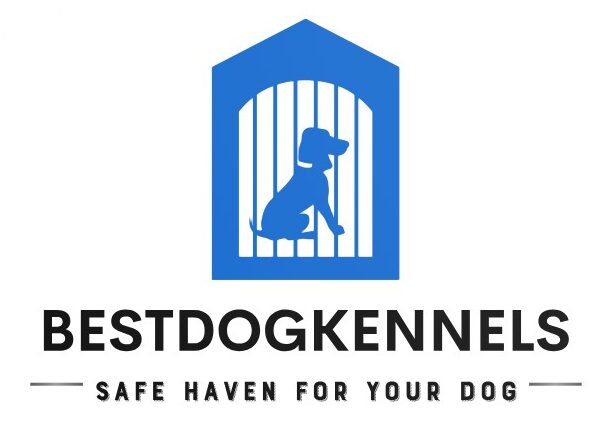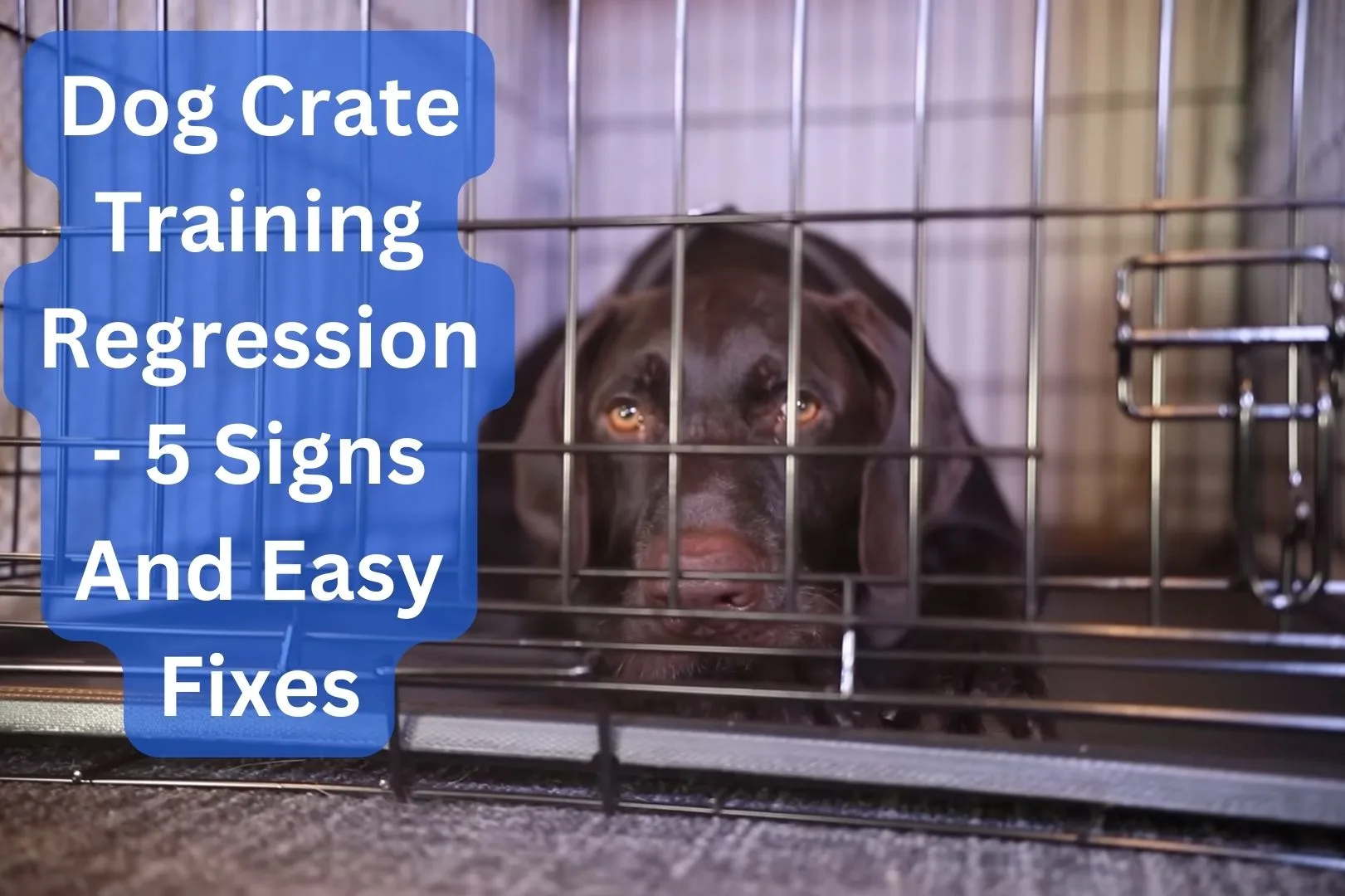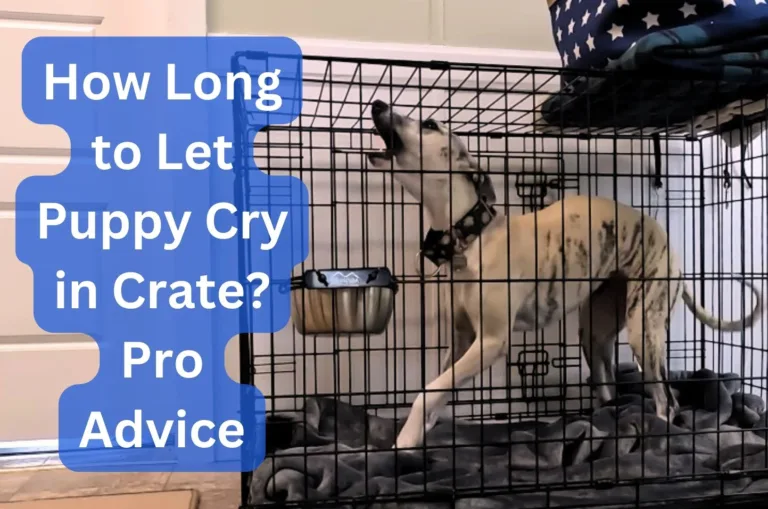Dog Crate Training Regression – 5 Signs and Easy Fixes
Just when you thought your furry friend had mastered the art of chilling in his crate, he started barking, whining, and clawing at the door.
Dog crate training regression refers to a step back in your pup’s crate training journey and can leave you confused and frustrated.
But fear not! This common hurdle doesn’t have to hamper your dog’s crate training progress.
If my dog was crate-trained but now regressing is concerning you, then you’re at the right place! So, why does it occur, and how can it be solved?
Signs of training regression in dogs typically include reluctance to enter the crate, whining for no reason, and inability to relax inside.
To address these issues, you can try placing your pet’s favorite treats inside the crate to create positive associations, alongside retraining exercises focusing on reintroducing the crate.
Making the crate an inviting space with soft bedding and comforting items can also help alleviate his reluctance.
That said, let’s dig deeper into this guide that will equip you with the knowledge you need to navigate crate training regression effectively.
We’ll explore the potential causes, provide solutions, and offer helpful tips to ensure a smooth experience for both you and your canine companion.
Let’s begin.
Table of Contents
5 Common Signs of Dog Crate Training Regression
Crate training regression in dogs is quite disheartening, especially when they responded well to their training previously.
However, recognizing the signs early on can help address the issue properly, allowing you to ensure the well-being of your furry companion.
Here are some signs that may indicate crate regression in dogs:
1. Reluctance to Enter the Crate
If your pet, who previously entered his crate willingly upon command, starts showing hesitation or outright refusal, it’s a clear sign of regression.
This type of behavior may occur due to various factors. However, developing negative associations with the crate or changes in the environment that make the crate less appealing remains prominent.
2. Discomfort and Inability to Relax
Another sign of dog crate training regression is the pet’s inability to settle down or relax in the crate. This may manifest in the form of your pet constantly shifting positions or showing distress when inside.
While it’s mostly due to negative experiences attached to the kennel, this can also result from physical issues like an uncomfortable crate pad.
3. Whining or Crying Without Obvious Reasons
Your pet may whine for multiple reasons, especially when he wants to go outside, is hungry, or seeking attention.
However, if this happens inside the crate for no apparent cause, it could signify training regression. This usually happens when your furry companion feels anxious in the crate.
4. Increased Stress Signs
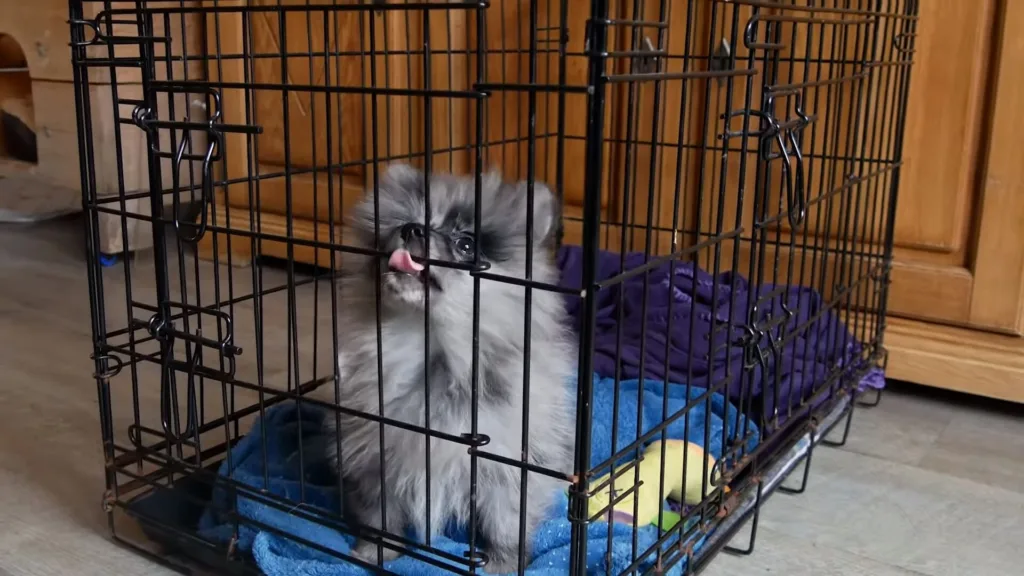
If your pup is showing signs of stress, like panting, drooling, or excessive licking, it may suggest it’s not as comfortable with being crated as it used to be.
All these stress signals indicate his perception of the crate has shifted negatively.
5. Attempts to Escape the Crate
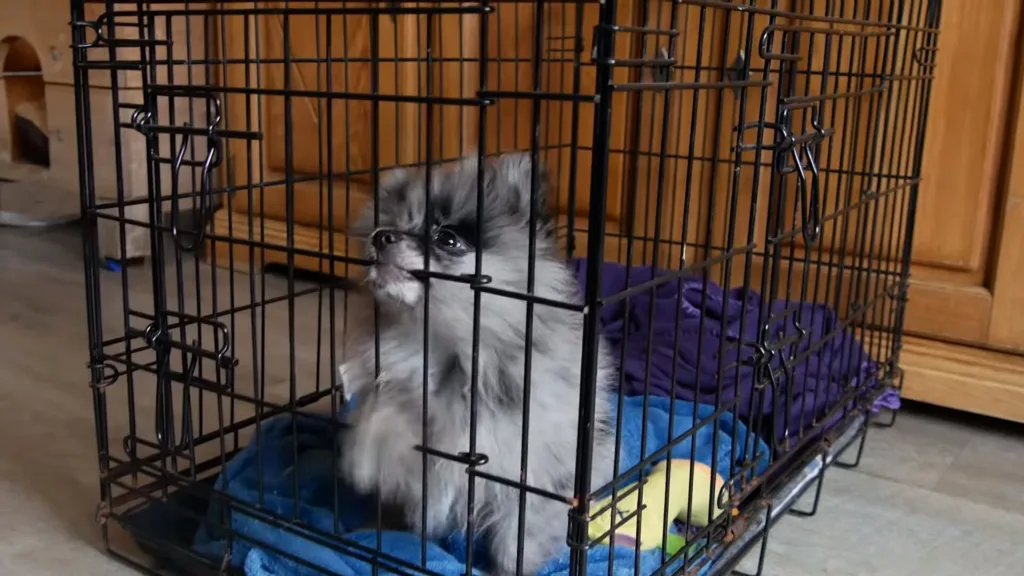
When your dog tries to escape the crate by chewing through it, it may indicate regression.
Moreover, behavior like forcefully pushing against the kennel’s door also comes in this category.
These actions signal that your pet is not only feeling discomfort inside the crate but it has a strong desire to avoid being there altogether.
Some Major Reasons Behind Dog Crate Training Regression
Wondering why is my dog regressing in crate training? Let’s break down a few major causes:
1. Testing Your Boundaries
Dogs, like many animals, may test boundaries set by you to understand what behaviors are acceptable.
This testing can manifest as regression in crate training when your pet, previously comfortable and compliant with crate time, starts to resist or show undesirable behaviors.
Simply put, it is often a way for the dog to see if the rules have changed. Or if certain behaviors might lead to more desirable outcomes, like extra attention or being let out of the crate.
2. Separation Anxiety
Dogs with separation anxiety become stressed and anxious when left alone or separated from their owners.
This can lead to destructive behaviors, excessive barking, and attempts to escape the crate, which are common cases with crate regression dogs.
3. They are Physically Uncomfortable
Physical discomfort in the crate can arise from several factors. These include the crate being extremely small, lacking adequate bedding, or situated in a place with too much or too little stimulation (e.g., in direct sunlight or in an overly isolated area).
Your pet will naturally avoid spaces that make him feel uncomfortable or stressed, which may manifest in the form of crate training regression.
4. Unpleasant or Unfamiliar Smell
Dogs have a keen sense of smell, and a crate with an unpleasant scent may put them off. The same goes for when the crate doesn’t carry their scent, which might make it feel unwelcoming.
5. Other Factors
Here are some other reasons to answer why my dog is regressing in crate training:
- Experiencing a traumatic event related to the crate, such as fear or pain.
- Inconsistencies in crate training, such as reacting differently to similar behaviors.
- Medical issues such as urinary infections, separation anxiety, or changes in physical ability.
- Moving too quickly through the training stages without ensuring your dog is comfortable at each step or reducing rewards before he is fully comfortable.
- Lack of stimulation can make the crate an unappealing place for your pup, leading to attempts to escape or disinterest in staying inside.
How to Resolve Dog Crate Training Regression
Let’s explore a few simple solutions that can help you tackle your dog regressing crate training:
1. Place Their Favorite Treats Inside the Crate
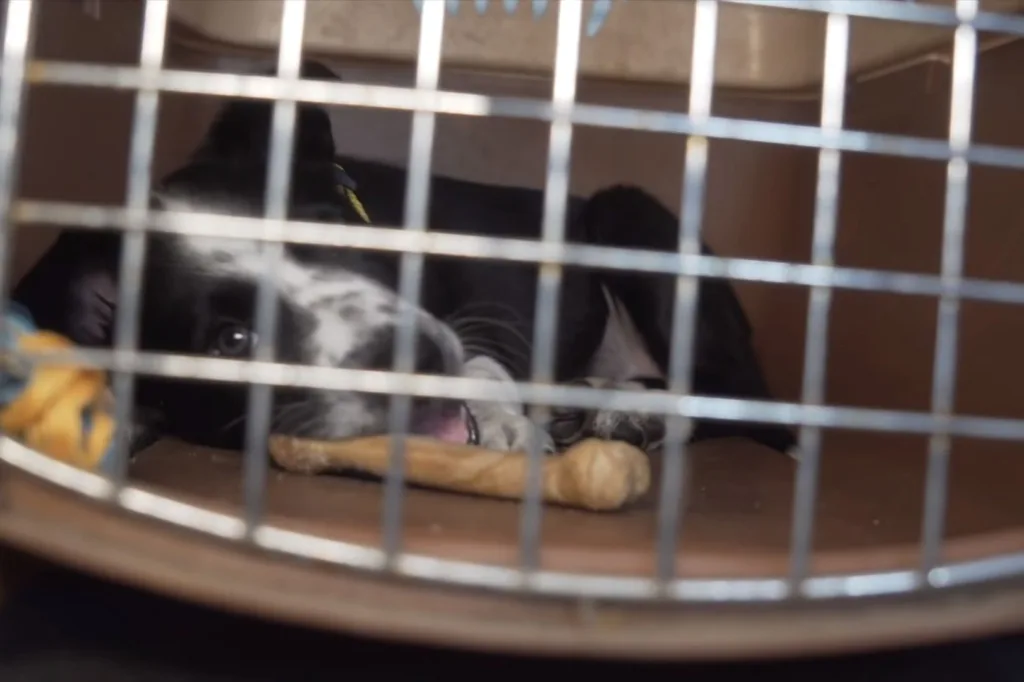
By feeding your dog their favorite treats and meals inside the crate, you’d associate the crate with good vibes for him. This positive reinforcement can help diminish any reluctance he might have about spending time there.
It’s a smooth move that leverages your pup’s love for food to make the crate feel like a reward, not a punishment.
2. Crate Train Your Pet Again
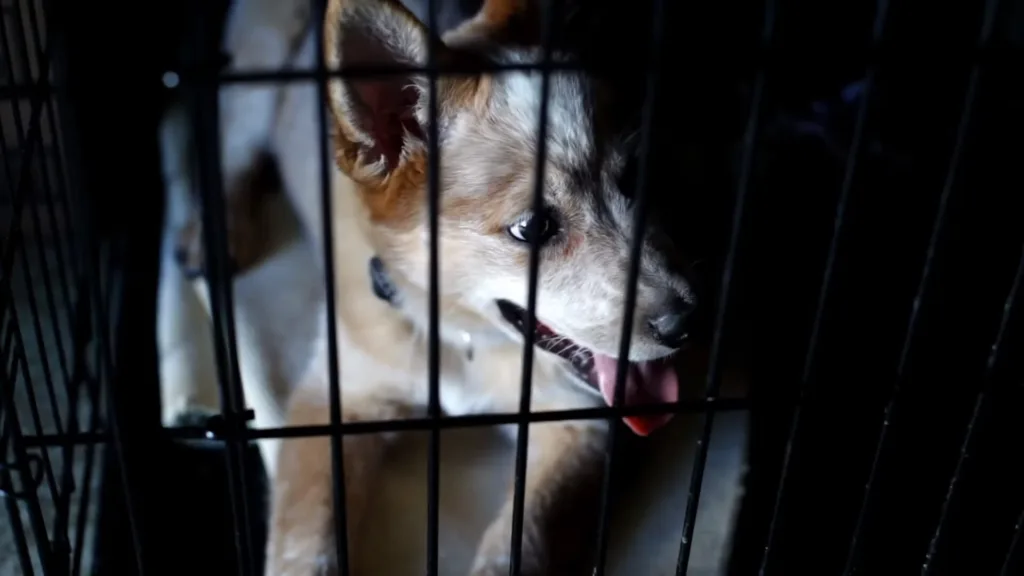
Sometimes, you’ve got to hit the reset button. Starting the crate training process from scratch allows you to reinforce the basics in a positive, consistent way.
You have to gradually reintroduce your dog to the crate, starting with short, positive experiences and slowly increasing the time he spends inside.
This method ensures that the crate is seen as a safe and happy place by him, rebuilding that trust and comfort.
3. Make the Crate a Cozy Place
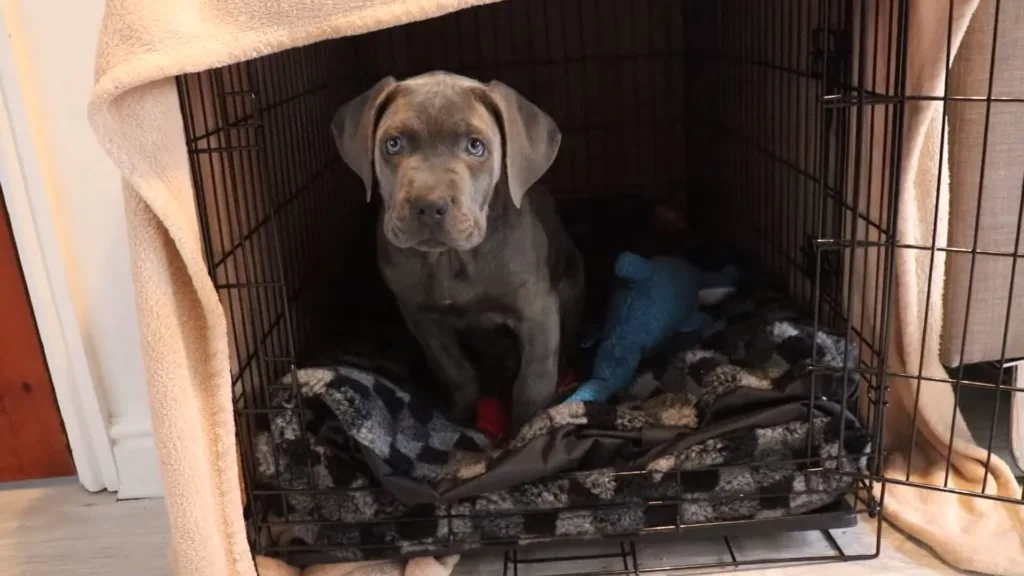
Another step to fixing the dog regressing in crate training problem is to make the crate inviting and comfy so that your furry companion chooses to hang in there.
For this, you can add their favorite blanket, a comfy bed, and maybe a toy or two that they love.
The goal is to create a space that feels safe and secure, a place where your pup can retreat when he needs some downtime. Making it appealing ensures your dog views the crate as his safe place, not a cell.
4. Stay Patient When Re-Training Your Dog
Every dog is unique, with their own personality and pace of learning. Thus, rushing them through retraining can cause more stress and fear, which is the opposite of what you are aiming for.
Being patient and working at your dog’s speed shows them love and understanding, reinforcing trust.
Celebrate the small victories and keep the atmosphere positive and encouraging. Your patience and consistent effort will pay off in getting a happy, crate-trained pup.
Dog Crate Training Regression Case Studies
Here are a few case studies that will help you understand dog regression in crate training better:
Case Study 1: Anxiety Induced By Change in Environment
Background: A 2-year-old Labrador Retriever named Max showed signs of crate training regression when his owner shifted to a new house.
The pet began to whine and bark excessively whenever left alone in the crate, even though he was previously comfortable and calm in the kennel.
Investigation: When investigated, it was revealed that Max’s owner placed the crate in an isolated area of the new house.
It was the lack of familiarity and change in the environment that triggered anxiety and subsequent regression in the pup.
Solution: Max’s owner decided to help him gradually adapt to the new surroundings. For this, the crate was initially placed in the house’s central part, where Max could see people in the house more frequently.
Additionally, the owner utilized positive reinforcement techniques to rebuild Max’s perception of the crate with comfort and safety.
This included rewarding him with treats for entering the crate, placing familiar bedding and toys inside, etc.
Case Study 2: Health-Related Regression
Background: Bella, a 4-year-old French Bulldog, started to exhibit signs of crate training regression. These involved soiling her crate and barking aggressively whenever the owner crated her.
Like Max, she was also well-trained and used to adjust comfortably inside her kennel. Moreover, this behavior emerged suddenly and was out of character for Bella.
Investigation: Bella’s owner took her to a vet who, after a thorough examination, revealed that she was suffering from a urinary tract infection (UTI).
Due to this, she faced discomfort and increased urgency to urinate, leading to accidents inside her crate.
Moreover, the pain stemming from UTI made her associate the crate with a negative experience, causing further regression.
Solution: The vet treated Bella with antibiotics for UTI. They also recommended her owner increase the frequency of her bathroom breaks and use puppy pads temporarily to avoid accidents.
The owner was also advised to retrain Bella using positive reinforcement to eliminate her negative associations with the crate.
Case Study 3: Developmental Changes Causing Dog Crate Training Regression
Background: Cooper is a 6-month-old Golden Retriever who showed crate training regression as he transitioned to adolescence.
The major signs included excessive barking, chewing the crate, and frequent accidents. However, he was already crate-trained successfully as a younger puppy.
Investigation: Upon consulting a behaviorist, it was revealed that crate training regression in Cooper occurred due to his developmental stage.
As dogs enter their adolescence, they often test boundaries and exhibit changes in their behavior due to hormonal shifts, just like human teenagers.
Solution: Since this was just a normal part of Cooper’s growing phase, no such interventions were needed.
However, the behaviorist suggested the owner increase the pup’s mental and physical exercise to manage his potential stress.
Moreover, they also recommended that introducing engaging toys to the crate would help keep Cooper engaged.
Preventive Measures For Crate Training Regression in Dogs
To prevent your dog from regressing in crate training, you need to follow an approach that extends beyond the basics, like retraining and positive reinforcement.
Here are a few such preventive measures that can help in the long term:
- Use calm scents or pheromone diffusers near the crate. This helps create a relaxing environment for your pup. Even natural calming agents like lavender can help if your furry companion is facing anxiety.
- Ensure the crate is positioned in a way that your dog can see the environment around them. The goal is to avoid isolating them. However, the view shouldn’t be overstimulating, which may induce stress in your pup.
- Introduce breaks from crate training, where you allow your dog to spend some days without being crated. This helps eliminate monotonous association with the crate.
- You can also use technology to interact with your dog while he is in the crate. It may include talking to him through a pet camera to reduce feelings of separation anxiety.
- Change the location of the crate periodically within the home to prevent associations with a single space, especially if any negative experience has occurred at a place.
- Gradually expose your dog to various mild sensory experiences (sounds, lights) in a controlled manner to build his resilience toward unexpected stimuli. This helps prevent regression due to fear triggered by environmental factors.
- Introduce items with familiar scents into the crate, such as your t-shirt with your scent, to provide comfort through familiarity.
- Once your dog is comfortable with basic crate training, introduce advanced training commands or tricks that involve the crate. For instance, allowing them to close the door themselves on command will keep them mentally stimulated and engaged.
FAQs
Are there any medical conditions that may contribute to crate training regression?
Yes, medical conditions can contribute to dog crate training regression.
Issues such as urinary tract infections, digestive issues, or mobility problems can make it uncomfortable or painful for a pup to remain confined for usual periods, leading to regression in their crate training habits.
Is it possible for older dogs to experience crate training regression?
Yes, older dogs can experience crate training regression due to various reasons such as health issues, anxiety, changes in the environment, or a decrease in bladder control.
Should you seek professional help if your dog regressed on crate training?
If measures like retraining and positive reinforcement fail to work, it’s recommended to get in touch with a professional trainer or behaviorist to address regression in your pet.
They will identify the underlying cause of this behavior and suggest targeted strategies to resolve the issue altogether.
Dog Crate Training Regression – Solved
To conclude, dog crate training regression, though challenging, is a manageable issue if you address it with patience and consistency.
It’s crucial to identify the early signs, such as increased anxiety, whining, or reluctance to enter the crate, so you can intervene in a timely manner.
The best part is that there are various solutions for this issue, including revisiting training basics, associating positive experiences with the crate, and seeking professional help if required.
So, by following the strategies we discussed in this article, you’ll successfully overcome regression in your furry companion.
For more insights and tips on other crate-related queries, explore our other posts.
Thanks for reading, folks!
